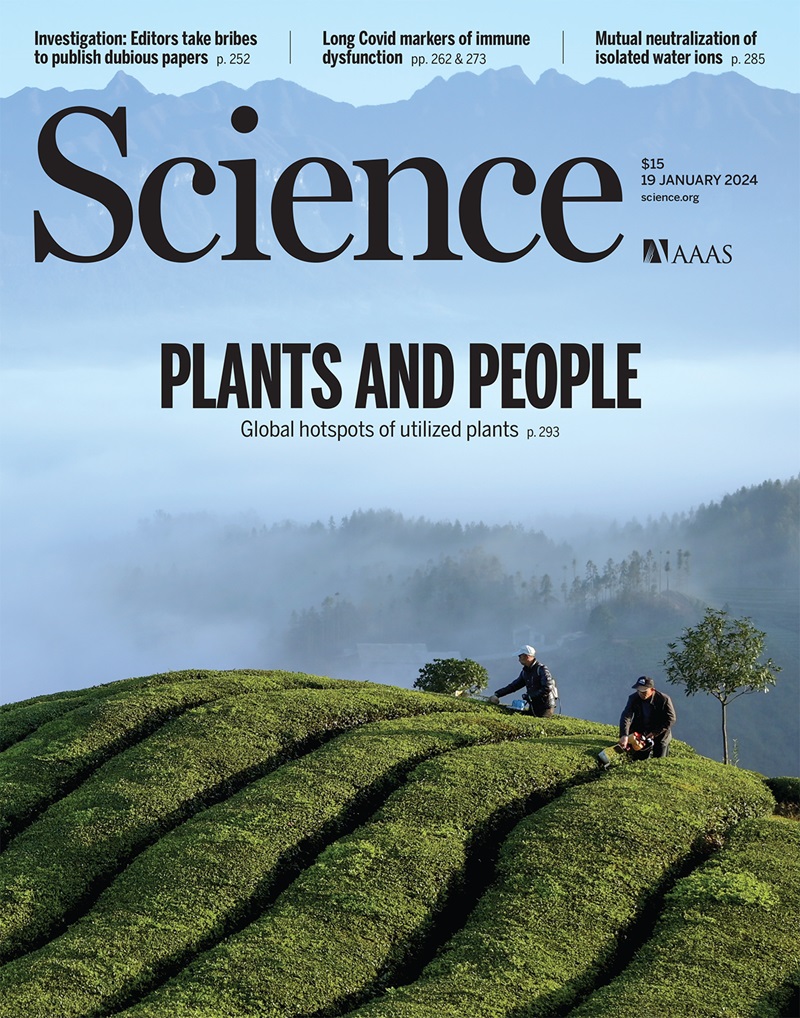Divergent FOXA1 mutations drive prostate tumorigenesis and therapy-resistant cellular plasticity
IF 44.7
1区 综合性期刊
Q1 MULTIDISCIPLINARY SCIENCES
引用次数: 0
Abstract
FOXA1 is altered in 10 to 40% of prostate cancers, yet its oncogenic mechanisms remain uncharacterized in vivo. We developed knock-in mouse models representing distinct classes of FOXA1 mutations. Histopathological and multi-omic analyses of prostate tissues and organoids revealed that Class 1 mutations, in conjunction with不同的FOXA1突变驱动前列腺肿瘤发生和抗治疗细胞可塑性
FOXA1在10% - 40%的前列腺癌中发生改变,但其在体内的致癌机制尚不清楚。我们开发了敲入小鼠模型,代表不同种类的FOXA1突变。前列腺组织和类器官的组织病理学和多组学分析显示,1类突变与p53失活一起,通过mTORC1/2和嵌合AR半增强子产生的致癌AR信号的共同激活,驱动雄激素依赖性腺癌。相比之下,2类突变通过激活KLF5和AP-1新增强子回路,将分化的管腔细胞重编程为祖细胞样状态,从而诱导管腔内可塑性,即使在阉割雄激素水平下,也能增强存活和增殖。我们的研究结果表明FOXA1是一个多方面的癌基因,具有不同的突变类别,可以不同地进化以驱动前列腺肿瘤的发生或治疗抵抗性进展。
本文章由计算机程序翻译,如有差异,请以英文原文为准。
求助全文
约1分钟内获得全文
求助全文
来源期刊

Science
综合性期刊-综合性期刊
CiteScore
61.10
自引率
0.90%
发文量
0
审稿时长
2.1 months
期刊介绍:
Science is a leading outlet for scientific news, commentary, and cutting-edge research. Through its print and online incarnations, Science reaches an estimated worldwide readership of more than one million. Science’s authorship is global too, and its articles consistently rank among the world's most cited research.
Science serves as a forum for discussion of important issues related to the advancement of science by publishing material on which a consensus has been reached as well as including the presentation of minority or conflicting points of view. Accordingly, all articles published in Science—including editorials, news and comment, and book reviews—are signed and reflect the individual views of the authors and not official points of view adopted by AAAS or the institutions with which the authors are affiliated.
Science seeks to publish those papers that are most influential in their fields or across fields and that will significantly advance scientific understanding. Selected papers should present novel and broadly important data, syntheses, or concepts. They should merit recognition by the wider scientific community and general public provided by publication in Science, beyond that provided by specialty journals. Science welcomes submissions from all fields of science and from any source. The editors are committed to the prompt evaluation and publication of submitted papers while upholding high standards that support reproducibility of published research. Science is published weekly; selected papers are published online ahead of print.
 求助内容:
求助内容: 应助结果提醒方式:
应助结果提醒方式:


